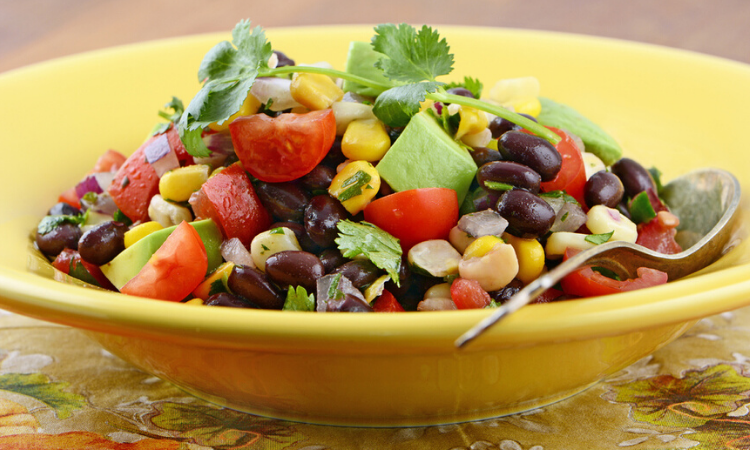
Most of us at one time or another, or perhaps all the time, want to improve how we eat, exercise, sleep and manage stress. Yet making the changes to see these improvements often falls into the “best intentions” category and not much progress happens. Sustaining those good intention changes and establishing new habits takes a lot of focused, conscious effort. With COVID-19 and challenges facing our society, we easily can be distracted from caring for our health.
Nevertheless, we remain concerned about our health, longevity, and quality of life and now more so than ever. Perhaps if we understand why it is hard to sustain healthy change, we may be able to harness our inner resilience to change our lifestyle habits and gain better health.
In 2009 two researchers, Richard Thaler, an economist, and Cass Sunstein, a legal scholar, released a seminal book, Nudge: Improving Decisions About Health, Wealth, and Happiness. Simply put, the authors promote the concept of “choice architecture”- the idea that the way choices are structured can have positive effects on how people make decisions to do something for their benefit. In other words, people can be “nudged” into the right choices by how the path to making positive choices is structured.
Most of us prefer simplicity and whether it is best for us or not, will take the easy way. Thaler promotes two systems of decision making. One is the Automatic System that we use when making a response or decision that is instinctive, intuitive- almost unconscious, like laughing at something funny or mindlessly eating a lot of potato chips. The Automatic System usually serves us well. We get through our day without having to think too much about ordinary choices. The other is the Reflective System that requires a deliberate, conscious, and thoughtful decision-making process, like deciding to have part of your paycheck go to savings or refusing a piece of chocolate cake. By applying the concept of “choice architecture”, we can plan a series of “nudges” to guide ourselves on a path to improve our nutrition and physical activity. Faithfully stick to your plan for four to six weeks so that the Automatic System of new healthy habits kicks in.
Use the “nudge” suggestions below as your check list. Add your own “nudges” to the list.
Nudges For Healthy Eating:
Reflective System planning is key to taking control over what you eat.
Get support and agreement from your family to make healthy eating a family goal. That includes defining what is healthy.
Plan healthy menus for a week- breakfast, lunch dinner, snacks.
Your grocery list should reflect your menu. Stick to the list.
Keep processed snack foods off the list, out of the pantry.
Collect fast food nutrition lists so you can make healthy, lower calorie choices prior to ordering.
Set aside time each week for food prepping such as cutting up vegetables for salads and snacks or making and freezing soups to have on hand to simplify cooking when busy.
Use smaller plates for portion control.
Nudges for Physical Activity:
The recommendation is 150 minutes weekly of moderate intensity physical activity. If that seems daunting, remember small steps at first lead to more steps and big rewards.
Name the kinds of activity you like to do and can do. Dancing and gardening are options.
Write your activity schedule on a calendar to make an appointment with yourself.
Make sure you have the proper clothing, especially shoes, for the exercise you plan.
If you plan to use exercise equipment at home, locate it in a place where you will see it and use it. Repeat “see it, use it, do it”.
Set up and use apps on your phone to track steps, distance, and intensity to watch your improvement. Improvement begets more improvement.
If you are wanting to know why all this is important, check out How Not To Diet, by Michael Greger, M.D, FACLM or go to www.nutritionfacts.org.

Recipe Tip: Chop Chop Salad

The concept is to chop your salad ingredients into small chunks, including lettuce, and have them in the refrigerator ready to assemble a quick salad.
Vegetables: Try some of the following: Romaine lettuce, red or green peppers, scallions (green onions), carrots, celery, cucumber, broccoli and/or cauliflower, small cherry tomatoes, black beans or garbanzo beans, corn kernels, edamame, peas.
Most of these stay fresh for three to four days if stored in individual containers to keep them from getting soggy.
Seasonings: Salt and pepper, Mrs. Dash, fresh dill, chopped parsley, cilantro.
Dressings: A simple vinaigrette of 3 parts olive oil, 1 part red wine vinegar, Dijon mustard to taste, salt and pepper. Shake well.

Mimi Cunningham is a dietitian-nutritionist living in Eagle, Idaho. Her nutrition specialty is diabetes education and management. She loves writing about embracing healthy eating as fun plus a route to good health. She serves as a member of the Idaho Foodbank board of directors addressing food insecurity as a challenge to good health for Idaho children and adults.
On behalf of Smart Strategies for Successful Living, our sincerest appreciation goes to Mimi Cunningham for her contribution to our community website and commitment to healthy living and aging.
*Feature picture taken by Mimi Cunningham.
Our Video Resources
Related Resources
Changing Your Habits for Better Health: CLICK HERE
Source: National Institute of HealthBalanced Diet: CLICK HERE
Source: HealthlineExercise: 7 Benefits of Regular Physical Activity: CLICK HERE
Source: Mayo Clinic












